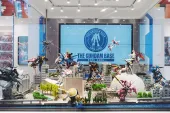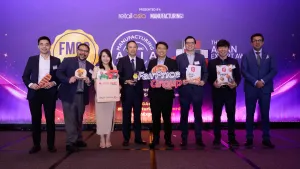
Toys ‘R’ Us Asia banks on ‘kidults’ to drive toy sales
Teens and adults aged 12 years and over are buying beloved toy brands from the 80s and 90s.
Picture a toy store where every corner sparks a childhood memory and every display features the latest trends. Toys “R” Us Asia is making that possible with a fresh concept — blending nostalgic favourites with innovations to entice the young and young at heart.
This blend of old and new is evident in their offerings for the growing “kidult” market, where known childhood brands are paired with collectibles.
The goal is to create “a space where anyone — whether they’re reliving a treasured memory or discovering something new — feels at home,” Toys “R” Us Asia (Holding) Ltd. CEO Leo Tsoi told Retail Asia.
“We’ve worked hard to modernise our stores whilst preserving the magic that so many of our customers remember from their childhoods,” he said. “Our new designs feature digital elements and contemporary layouts, but we never lose sight of the classics.
”Toys “R” Us Asia and its units are separate from all other Toys “R” Us companies globally, including the American toy, clothing, and baby product retailer that filed for bankruptcy in 2017 and 2018 amidst stiff competition from mass merchants and online retailers, and reopened in 2021 under a new owner.
The Asian market for toys and games is expected to generate $39.8b in revenues in 2024, with a projected compound annual growth rate (CAGR) of 3.39% until 2028, according to Statista.
Tsoi said the toy market in Southeast Asia is being shaped by the rise of the segment for “kidults” — adults whose interests or media consumption is traditionally seen as more suitable for children — who are returning to the joy of toys.
Southeast Asia is expected to become the fastest-growing region for traditional toys and games with a 5.4% retail value CAGR, according to Euromonitor International. One of the trends that emerged from the pandemic was the rise of “kidults” — teens and adults aged 12 years and over — buying beloved toy brands from the 80s and 90s such as Transformers, Care Bears, Barbie and more.
Japanese brands are also gaining popularity, Tsoi said. “Consumers are drawn to these beloved franchises, and we’ve been quick to bring them into our stores.”
A shift toward lower-ticket items and smaller basket sizes is likewise pushing Toys “R” Us to change its merchandising strategies. Tsoi cited the need to pivot quickly to meet consumers’ evolving needs.
"Our transformation agenda sets off to meet the latest customer demand and lead to innovative toy and play experience,” the CEO said.
‘Bold new roadmap’
Technology also plays a key role in enhancing the shopping experience at Toys “R” Us stores. Tsoi said the company has been integrating artificial intelligence (AI) into store designs to improve both customer and staff experiences.
Drawing on lessons from the tech-driven Chinese market, the company has refined platforms like point of sale systems, e-commerce, customer relationship management, and order management systems, which are now being rolled out across Southeast Asia.
Tsoi said the aim is to create seamless in-store and online interactions that appeal to all generations.
But there are challenges. “The macro environment was undeniably tough — low birth rates, inflation, and weak currencies were all headwinds,” Tsoi said. “We've had to rethink the way we operate, especially in light of the increased competition from nimble Chinese brands entering the Southeast Asian market.”
Tsoi said they have embraced “a bold new roadmap” to reimagine their stores and customer experience, moving their brand forward with innovation at the heart of everything they do.
Toys “R” Us managed to clear lingering inventory from the COVID-19 period, allowing it to recalibrate its store portfolio and enhance performance across the region.
A key success was the launch of the Toy+Play concept store at Jewel in Singapore, which has received positive feedback from customers, landlords, and the media. The concept would soon expand across the region, he added.



















 Advertise
Advertise







